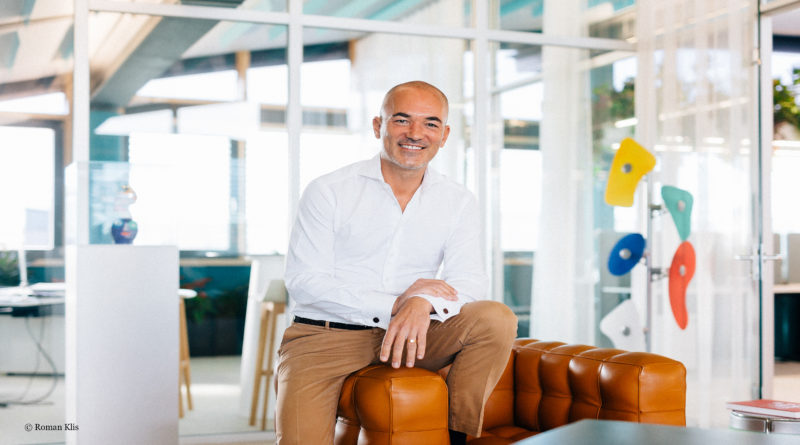The Non-Verbal Keyvisual is Gaining Importance
Packaging designer Roman Klis, whose agency Klis Design GmbH works for well-known brand manufacturers, spoke at FACHPACK about the future of branding and design and changing consumer behaviors. Generation Z is of enormous importance to the packaging industry and brand manufacturers, Klis told packaging-360.com in an interview. He said they only needed a single impulse to become interested in a brand.
Snacks are increasingly replacing classic meals, food experts say. What are the new challenges facing the packaging industry?
Roman Klis: The industry has to take Generation Y (1980 – 1994) and Generation Z (1995 – 2010) into account. For the first time, we have a generation that does not follow the behavior and values of their parents but develops its own and acts in a similar way worldwide. Observing this rapid change is as exciting as a whodunit, especially since Generations X & Baby Boomers are also aligning themselves with the behaviors of Generations Y and Z. This is a historic shift. When it comes to snacking, manufacturers have a very big opportunity right now to increase their market share at the point of sale. They just need to understand it and take advantage of it.
But on the other hand, there is also immense competitive pressure!
Klis: That’s right. Brand manufacturers need to be able to reach Generation Z, even without big advertising campaigns, because they make up a third of the world’s population and have 40 percent of the shopping power. Packaging designs need to give impetus to these shoppers. In the past, packaging design was made for consumers who could easily perceive more than three pieces of information. In today’s shopping situations, for example in the supermarket, a shopper can take in a maximum of two to three pieces of information, and in the digital environment, things come to a head; here, a single piece of information on the packaging must be enough to convince.
The younger generation only needs one impulse to sift through a brand but is then willing to invest more time in the product. The front of a package can contain one piece of information, and the back can be used for storytelling. For example, I read stories that address my feelings and individual needs. In this way, the brand shows a stance that the consumer shares.
What are the packaging trends for snacks?
Klis: Firstly, one must understand which cultural megatrends are profoundly influencing consumer behavior. In our view, there are ten global megatrends, six of which are growing: climate awareness, health and wellbeing, sustainability, new work, knowledge culture and connectivity. In addition to these megatrends, we also take into account segment-specific packaging trends and the development of generations Y and Z in order to include all influencing factors relevant for the brand and packaging design. If we look at explicit snacking trends such as energy or bonding, we can see that a snack should provide energy in the changed world of work, for example – when I skip a meal, or snacking triggers a sense of community when I put a pack of candy on the table, for example. In total, this brings us to five snacking trends: in addition to energy and bonding, wellbeing, indulgence, and mood-shift are also growing the most.
Why do you think the non-verbal key visual is gaining particular importance as a design element on packaging?
Klis: Brands that have successfully implemented a non-verbal key visual have not only increased their brand awareness enormously but can also market their products more successfully in the physical and digital shopping worlds. A non-verbal key visual must be intuitively understood. It reflects the brand essence through semiotic decoding. This element on the packaging must be visible at a distance of three to five meters and provide an impulse. In addition to the non-verbal key visual, there are five other brand properties that are important for brand recognition and worth protecting. These include color and shape as well as brand, sound, and texture. In snacking packaging, color and shape are hugely important. It’s a huge challenge to develop a shape that protects the brand and serves trends.
If I can recognize brands even with my eyes closed, that’s awesome. Think of the bulbous Orangina bottle, which has the shape of an orange and which also lets you feel the orange skin haptically in the glass texture, or of the sound when opening the Nutella jar. A packaging designer can’t create the sounds, but he can create the shape. The square Ritter Sport chocolate was basically the first snacking invention in Germany. Carla Ritter had the idea of developing a chocolate that would fit in a jacket pocket. At the time, to-go consumption was frowned upon, so the square package disappeared into the jacket.
Do you have an example of a key visual?
Ritter Sport’s vegan chocolate, for which we did the design. For our design approach, we took the existing “V” and translated it into a non-verbal key visual that reflected the concept of a great-tasting vegan chocolate. In addition, we emotionally charged the design concept to appropriately address millennials’ drive for new, exciting taste adventures. By directly linking the non-verbal “V” element via ingredients and color codes to a specific flavor, a unique and impactful vegan chocolate assortment was created for the shelves. By using matte foil as the packaging material, other important vegan codes could be seized on.
In short, the ‘V’ element represents a non-verbal key visual for the vegan line and appeals to millennials in a physical and digital shopping environment.
However, we don’t find the vegan Ritter Sport in a promotional display at retail, but rather hidden on the shelf. So, the best design doesn’t help if the product isn’t well placed, right?
Klis: I agree with you there. The placement is important. And there are displays that are no longer just a wrapping around the products. With displays, there are trends toward staging. A cardboard cow in which the Milka bars are presented. Or a big V for Ritter Sport’s Vegan key visual, to stick with the example.
You talk about the design trend “be open, honest, and transparent.” What does this mean?
Klis: Generation Z wants authentic products, and packaging is just one building block. Brands that explain, like Innocent, the juice manufacturer, that they still have gaps achieve more credibility. “Fifty percent of our packaging is recycled material, 15 percent is plant-based, and we’re still working on the rest.” Those who promise sustainability but only relate it to packaging often earn criticism. GenZ punishes brands that, in its eyes, only have profit in mind, is decidedly more radical in its actions, and actively uses social media to give perceived injustices a public voice.
Speaking of social media. More and more, retailers and brand manufacturers are showcasing their products on Instagram. How important is an “insta-friendly” design language?
Klis: It’s extremely important. While GenY consumers are described as digital pioneers who grew up in the analog world (digital immigrants), GenZers are true digital natives who were born with the modern technologies of the Internet. Both generations live a conscious lifestyle and question existing structures – always driven by the desire to make the world a better place. To communicate successfully with Generation Z, brands need to act boldly, authentically, and non-conformist, convey simple messages and consequently follow a sustainable and purpose-driven brand approach.
What is the importance of labels – finished surfaces?
Klis: They, too, still have a high relevance as long as the aforementioned trends are taken into account. It is often the case that a matte brown label intended to symbolize sustainability is very well received in surveys. In the actual purchasing situation, however, one will find that buyers will reach for the product with high visibility. This is often supported by strong coloration, finishes such as hot foil, and varnishes.
Will sustainability remain a trend?
Klis: The unplanned but positive impact of the lockdown on our physical environment, as well as on consumer attitudes regarding decarbonization (CO2 reduction) and depolymerization (plastic reduction), is enormous. People are suddenly seeing how changes in consumer behavior are possible without having to fundamentally give up anything. Sustainability, globalization, and climate awareness therefore need to be reflected more in marketing activities, product offerings, and packaging design and brand identity. Covid-19 also showed us that humanity is more vulnerable than expected. Thus, products that pay attention to health and well-being are currently experiencing more market potential.
By Anna Ntemiris




